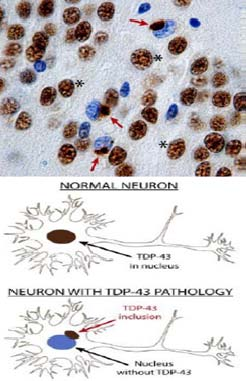Control of neurodegenerative diseases
Comparison of a normal neuron and one affected by a TDP-43 bound condition Nowadays, there is no effective treatment against neurodegenerative diseases, so finding new molecules that can be used as drugs is a priority objective in the research on these pathologies.
The hyperphosphorylation of the protein TDP-43 induces the formation of aggregates that have been detected in patients with amyotrophic lateral sclerosis or with frontotemporal lobular degeneration. It has been found that CDC7 kinase is responsible for the dual hyperphosphorylation of TDP- 43 in 409/410 serines in certain models, so inhibition of this CDC7 kinase would be an interesting strategy to develop drugs for neurodegenerative diseases.
The new synthesized compounds, purine derivatives, are CDC-7 inhibitors and useful as potential drugs for diseases mediated by TDP-43 proteinopathies, such as Alzheimer's disease, amyotrophic lateral sclerosis (ALS), and frontotemporal dementia
Main innovations and advantages
· They are able to cross the blood brain barrier, an essential propertyfor any drug that must act in the central nervous system.
· Constitute a solid and innovative alternative in the search fortreatments for neurodegenerative diseases.
· They can be presented in the most suitable pharmaceutical formulationfor each treatment.






